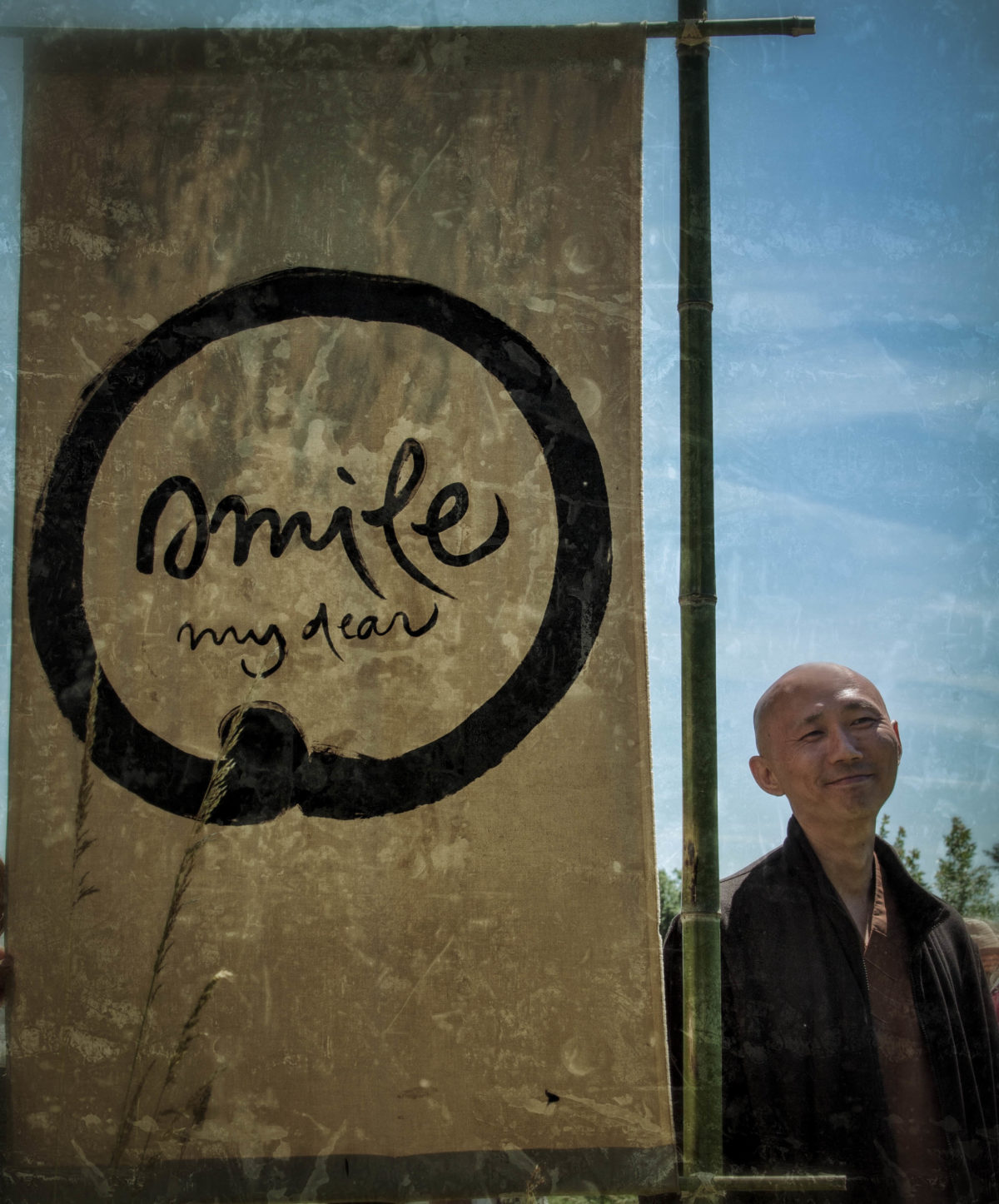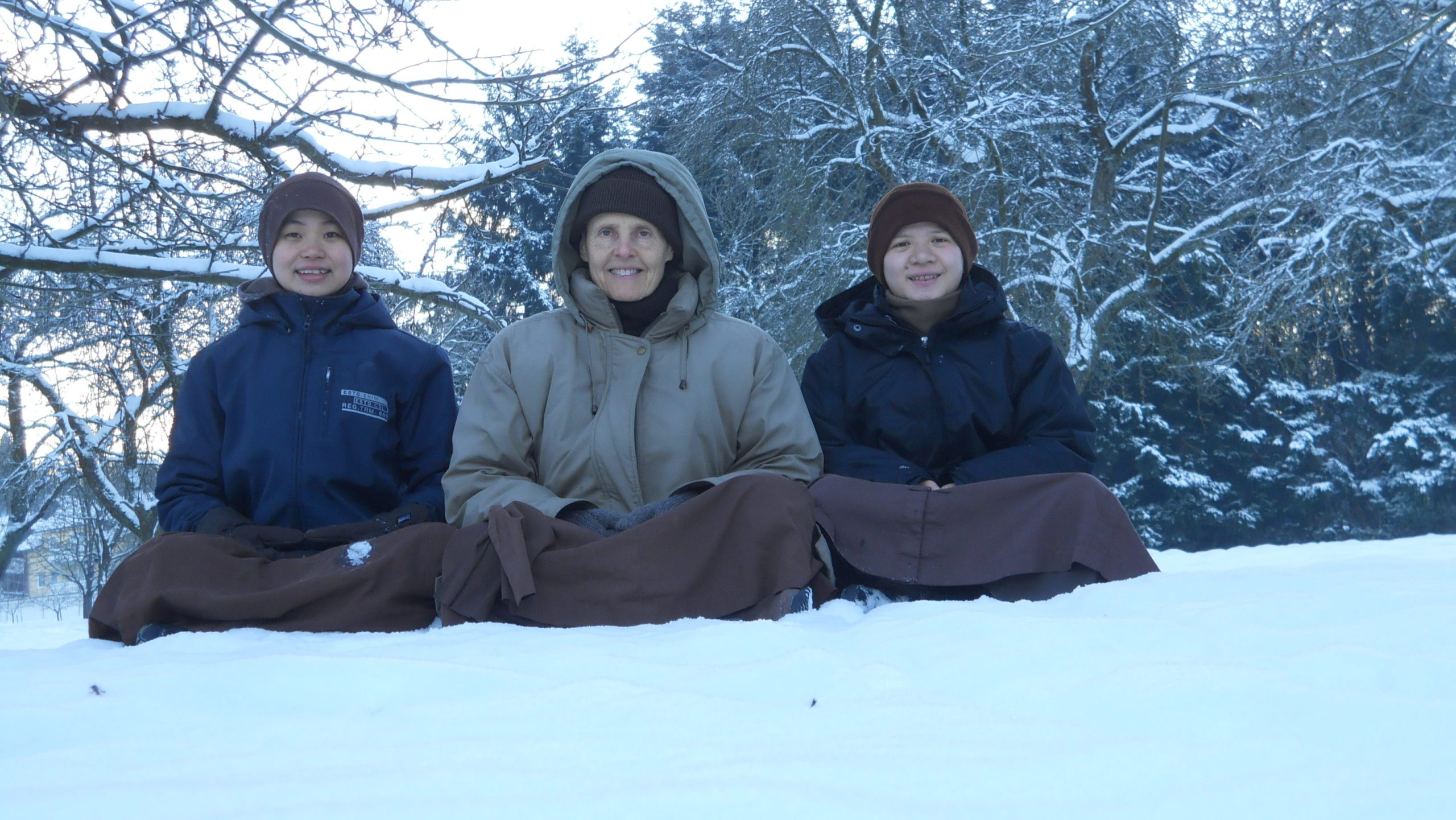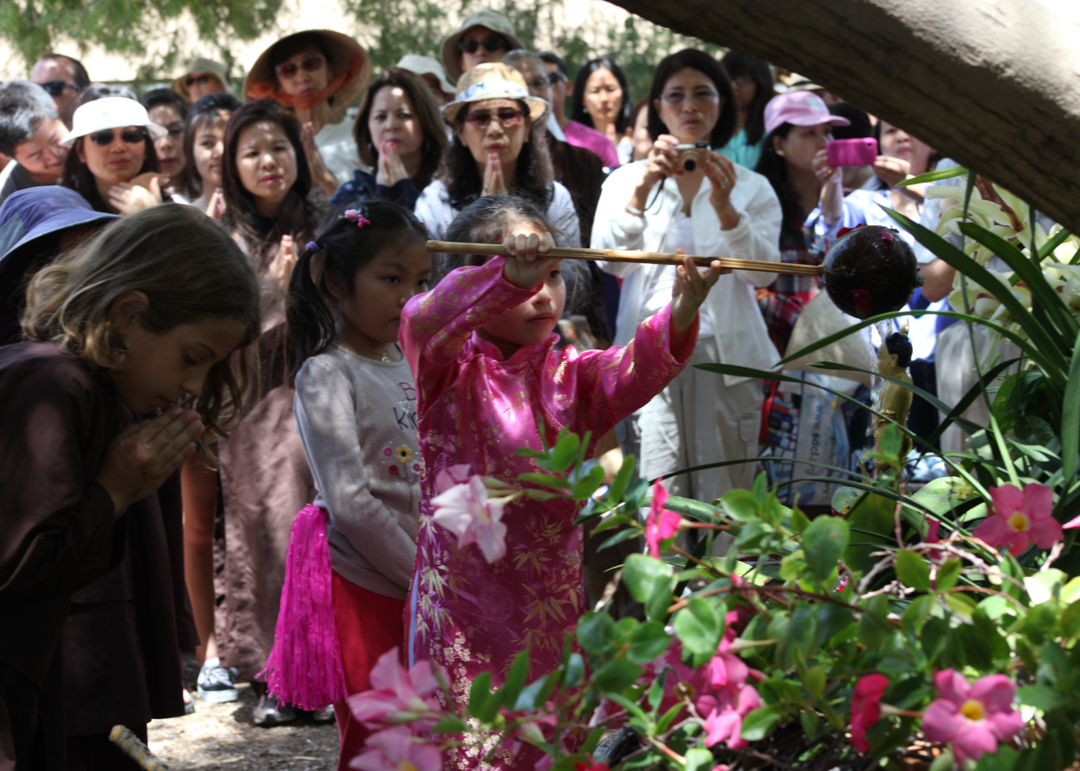By Sister Annabel, True Virtue

“Mindfulness of breathing is the great vehicle used by the Buddhas to save beings who are drifting and sinking in the ocean of suffering.”
This is the opening sentence of a text that was studied in a course for Dharma teachers in training at the European Institute of Applied Buddhism (EIAB) last April. The text is very ancient, belonging to the third century BCE.
By Sister Annabel, True Virtue

“Mindfulness of breathing is the great vehicle used by the Buddhas to save beings who are drifting and sinking in the ocean of suffering.”
This is the opening sentence of a text that was studied in a course for Dharma teachers in training at the European Institute of Applied Buddhism (EIAB) last April. The text is very ancient, belonging to the third century BCE. It is the Preface to the Sutra on the Full Awareness of Breathing and was written by the father of Vietnamese Zen Buddhism, Master Tang Hoi. In our own time, mindfulness of breathing is becoming more and more universal. It is not a Buddhist practice alone. It can be taught to anyone and practised by anyone of any spiritual path or no spiritual path with a name.
Have you ever been in a crisis when you do not know what to do? Your heart may be beating too fast. Your mind may be confused. You may be very afraid of what is going to happen. There is only one thing you can do and that is breathe and bring all your attention to your breathing. At first you see that your breath is uneven, short, and not so pleasant, but you keep being aware of it and it becomes deeper and more peaceful, and at the same time your mind becomes more peaceful.
When the mindful breathing continues like that for twenty minutes or so, it will bring you to the shore and you do not need to drown in the ocean of fear, confusion, or despair. We call it the great vehicle because it can carry anyone of any walk of life to the shore of safety. It has carried businesspeople, policemen, prisoners, teenagers, and politicians, to name but a few, to the shore of security and calm. In the EIAB there is no course in which we do not train ourselves in the practice of mindful breathing.
You do not have to wait for a crisis in order to practice mindfulness of breathing. In your daily life it can nourish and heal you at any time that you want. You can learn to enjoy your breathing. When you lie in bed unable to sleep you can take refuge in your mindful breathing in order to calm and relax body and mind. You can enjoy your breathing so much that it no longer matters whether you are able to sleep or not.
Say your teenage son or daughter is suffering or angry with you. Can you sit with him or her and listen without judging or reacting? If you follow your breathing it will not be so difficult. You stick to your breathing for the whole time your daughter shares her suffering. You look at her with compassion and the knowledge that she is suffering, and if you are able to sit solidly and look with kind eyes, she will suffer less.
Of course we need to train ourselves to breathe. We should not wait until we are caught in a strong emotion or our son is angry with us in order to practise mindful breathing. Today, right now, we need to learn to recognise an in-breath or out-breath as we breathe in and out. We can train ourselves to enjoy the feeling of our breath in our body. Now as you sit reading this page, look up for a moment away from the page and take an in-breath, feel your abdomen rising, breathe out, and feel your abdomen falling. You have come home to your body. You are in touch with your body. Every morning when you wake up, be aware of your in-breath and out-breath before you step out of bed. Before you sleep, be aware of your breathing. Every time you have to drive somewhere, before you turn the key in the ignition, remember to breathe in and out three times. Every time you hear the telephone, take a deep in-and-out breath. These are all moments of renewal for your body and mind.
“Wrong perception enters the mind of living beings as rivers enter the ocean. The mind is like a person who is very hungry and however much he eats he is not satisfied. The mind contains everything.”
This quotation comes from the second paragraph of the Preface to the Sutra on the Full Awareness of Breathing. In our own time, with the development of neuroscience, people are becoming more aware of and more interested in how their minds work. When we begin to be aware of our breathing we also become aware of our mind. Before, whenever something unpleasant was beginning to happen in our mind, we would turn on the television or eat a piece of chocolate, pick up a book or go shopping. Now we do not try to run away anymore. We recognise that unpleasant feeling happening in our mind and allow our breathing to help take care of it. We know that the feeling comes from a perception and that perception is only partly correct. In other words it is a wrong perception.
Our mind consumes and we suffer the results of what our mind has consumed. This is clear in the teaching on the Four Foods. The fourth food is called “Consciousness Food.” What does this mean? How can we eat consciousness? Consciousness is the contents of the store consciousness—all the memories and experiences that have been stored up in our own and our ancestors’ lifetimes. Especially when that has been a bad experience, our consciousness keeps bringing that experience up, and every time it comes up we consume it and suffer. It is as if you have a film of some unpleasant event in your life and you keep going into a dark room to look at that film. So you now tell yourself that this is a film you do not want to watch anymore. You want to give your attention to something different. If by chance that film is brought up by something that someone says or does, or some event that you experience, you tell yourself that this is only a film. You are an adult now. You are not in danger. You can go up to the screen and see for yourself that it is only a film. It is your mindful breathing that enables you to see clearly like this.
Recognise that your mind is always wanting to consume. It cannot face the emptiness of doing nothing. One day when you allow your mind to do nothing, just to sit and enjoy, like at the first moments of a new day as the dawn comes, you will see that your mind can also stop and be satisfied with a state of complete rest. This is a transformation not only for you but for your whole ancestral line, which has not known how to sit still and do nothing.
“The mind is very deep and wonderful. If we are able to find an undisturbed place to practice, so that our mind can settle down and our thoughts are not carried away by wrong desires, then we shall be able to hear clearly ten thousand words and we shall not lose a single one.”
This quotation from the third paragraph of the text mentioned above shows what the meditator experiences of his own mind. We do not need MRIs to let us know how wonderful our mind is. It is enough to calm our mind by mindful breathing and to sit quietly, walk peacefully, or even eat a meal in mindfulness, in order to be able to see what a flexible and wonderful instrument the mind is. In the Anguttara Nikaya, the Buddha is recorded as saying, “There is one thing, O monks, other than which nothing can bring as much suffering and that is an untamed mind. There is one thing other than which nothing can bring as much happiness and that is a tamed mind.” If we know how to master our mind, we can bring much happiness to ourselves and others.
We tame our mind by giving our attention to what can nourish and heal us and by withdrawing our attention from what waters the seeds of craving, hatred, and anger in us. We have to recognize which seeds are being watered and purposefully water what can nourish and heal us. So we do not put ourselves in an environment where the negative seeds are easily watered until we have tamed our mind and it is flexible enough for us not to water those seeds, even if the environment is not a positive one. The best environment is the environment of the Sangha, and even if we cannot live in a Sangha twenty-four hours a day, we can found or join a local Sangha and meet spiritual friends every week for a couple of hours to breathe and walk mindfully together and share our experience of the practice.
Applied Buddhism, which is taught at the EIAB, is about keeping the ancient teachings of the Buddha and his successors, the ancestral teachers, up to date so that they can be applied in every walk of life in the society in which we live. The mindfulness of breathing and the taming of our mind are things we all need in this present time so that we can protect ourselves and others from the harm that is done by fear and anger.
Mindfulness of breathing opens up a new world for the practitioner where any moment can be a deep moment of joy and happiness. So please find something that can help you come back to your breathing often in the day, like a beeping of your watch, a bell on your computer, an aeroplane overhead, or the sound of a telephone ringing; and whenever you are able, stay in a centre where mindfulness is practised so you can train.

Sister Annabel, True Virtue (Chan Duc) (above, center), is the Dean of Practice in the EIAB. She originally comes from England, where she was a teacher for fifteen years. In 1988, in India, she was the first Western woman to be ordained as a nun by Thich Nhat Hanh.

